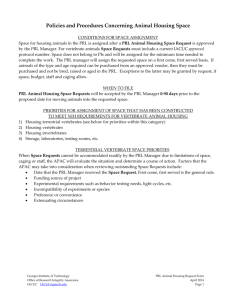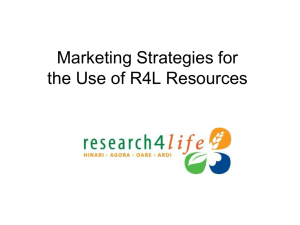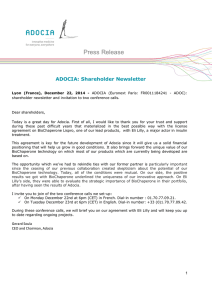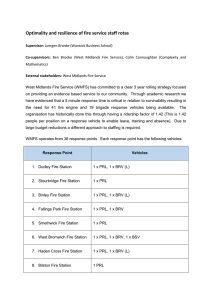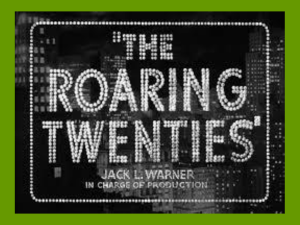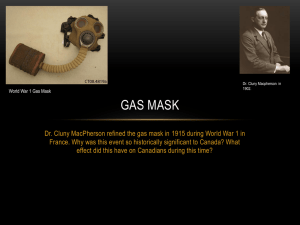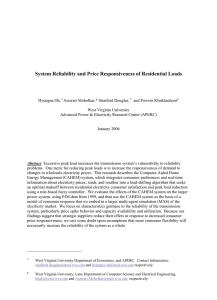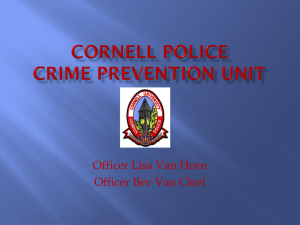Low Vision and Aging
advertisement
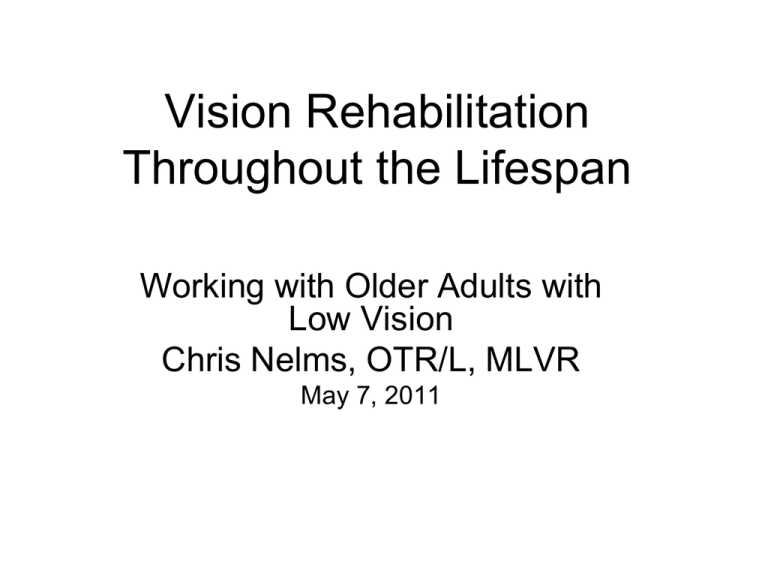
Vision Rehabilitation Throughout the Lifespan Working with Older Adults with Low Vision Chris Nelms, OTR/L, MLVR May 7, 2011 The Goals of Independent Living Skills Training with the Older Adult • Help them remain in their home safely and independently • Develop ways to use their remaining vision • Help then know how and when to use devices and strategies in addition or instead of their vision to do independent living skills • Safety OCCUPATIONAL THERAPIST PERFECT FIT FOR LOW VISION OCCUPATIONAL THERAPY • Training in disability and aging • Ability to address physical, psychological, cognitive and social needs of clients • Safety assessments Identifying the Challenges and Goals • • • • • • • • Reading Medicine Management and Health Money Management Home Management Communications Home Safety Food Preparation Personal care and hygiene Education • Clients need to be educated about –The eye disease they have –The outlook for their future –The expectations of vision rehabilitation Rehabilitation Strategies • Adapting the Environment –Lighting –Color and Contrast –Eliminate Clutter –Organize –Labeling –Magnification Lighting • Appropriate lighting can make all of the difference to a person with Low Vision • Lighting is preferential you need to look at the glare and quality of light to see what works best for the client Lighting • The closer the light is to the object the more intense and brighter it appears • Light should be directed towards what you are trying to see Lighting Lighting • Incandescent bulbs are cheaper to buy, but use more electricity and are hotter • Fluorescent bulbs use less electricity and are cooler to use • Halogen bulbs use less electricity but are very hot • LED bulbs are the most efficient in their use of electricity and last the longest Contrast and Color • High contrast makes it easier to locate objects • Use of bright colors against white or black background Color and Contrast • Pouring coffee into a white cup and milk into a dark cup or glass • Cutting meat on a white board and chicken on a black cutting board • Using a towel of contrasting color on a light surface to find things Eliminate Clutter Organize Labeling • Use tactile labeling –Bump dots, Braille, puff paint –Rubber bands, safety pins • Use large print labels • Use auditory labels RNIB PenFriend ID Mate Summit Bar Code Reader Magnification • Use larger print – enlarge on Xerox, buy large print books, write larger • Bring things closer • Use magnifiers –Hand held –Stand –Video Magnification • The higher the magnification the smaller the field of view - Stronger isn’t always better • Each magnifier has its own length of focus and it is important to keep the magnifier that distance from what you are reading. Resources for adaptive equipment • • • • Maxiaids.com Shoplowvision.com Independentliving.com LSSproducts.com Maximizing Vision through Eccentric Viewing/ PRL • What is a PRL? • Preferred Retinal Locus • That area of the retina that the best visual acuity can be located on. • Learning to use another part of the retina to see takes training Vision is more than 20/20 sight • 20/20 sight only describes whether a person can read a letter 3/8 of an inch in height from 20 feet • It does not tell anything about color vision, peripheral vision, depth perception or other visual skills that we use daily Vision is Understanding Eccentric Viewing • Is training the client to point their eye in a different direction to see better • Is training the brain to understand what it is seeing with a different part of the retina Maximizing Vision through Eccentric Viewing/ PRL • • • • • Determining near acuity Evaluation of the PRL Eccentric Viewing Training Improving Reading Ability Using it in ILS Determine near acuity • Single Letter Acuity • Continuous Text Acuity Evaluation of the PRL • Use of the Clock Method • Use of the Playing Card Method CAT Eccentric Viewing Training • Using PRL to see single letters or short words • Using PRL to see ILS items • Using PRL to see Faces • Using PRL with Optical devices Improving Reading Ability • Retraining the brain to understand what it is seeing and how to look with the PRL • Starting with short words and good spacing and progressing • Starting at an appropriate size type and working towards their goal Using PRL in Daily Living • Using PRL to see markings better rather than feeling for them. • Practicing using the PRL for watching television or when looking at friends or family Medications • • • • Large letter labeling Organization strategies Pill boxes Auto refill through the pharmacy Diabetic Education • Research shows that keeping the blood glucose at a stable level, will help reduce the diverse secondary effects of Diabetes Talking Meters • • • • Prodigy Voice Prodigy Auto Code Advocate Advocate Redi-Code Drawing up Insulin • • • • Safe Shot Count-A-Dose Syringe Support Insulin Pens Safe Shot • Safe Shot (#80010) – Can use any syringe – Needs a sighted person to set it at the correct setting – Good for large doses of insulin Prodigy Count-A-Dose • Count-A-Dose (#50166) – Used with 50 unit ½ cc syringes – Counts in 1 unit increments – Can be used with 2 bottles of insulin – Cumbersome to do large doses of insulin Syringe Support • Syringe Support (#50113) – Used with 100 Unit 1cc syringes – Each rotation in 2 units of measure – Cumbersome to do large doses of insulin Insulin Pens • Available by prescription only • Not available in all types of insulin • More expensive than regular insulin and syringes • Cumbersome to do large doses of insulin Resources for adaptive equipment • • • • Maxiaids.com Shoplowvision.com Independentliving.com LSSproducts.com

